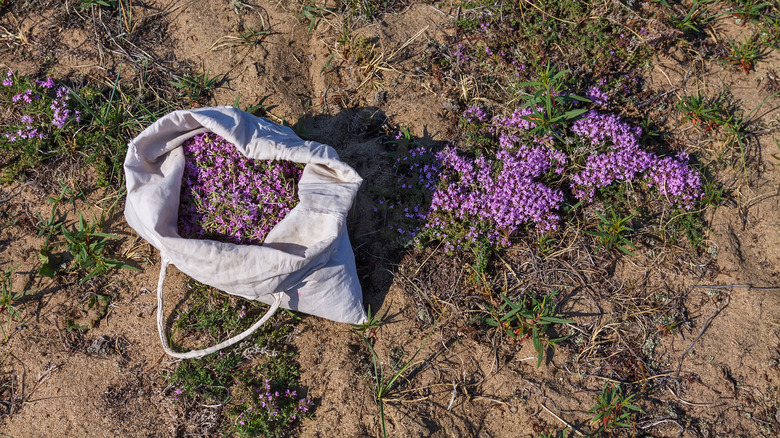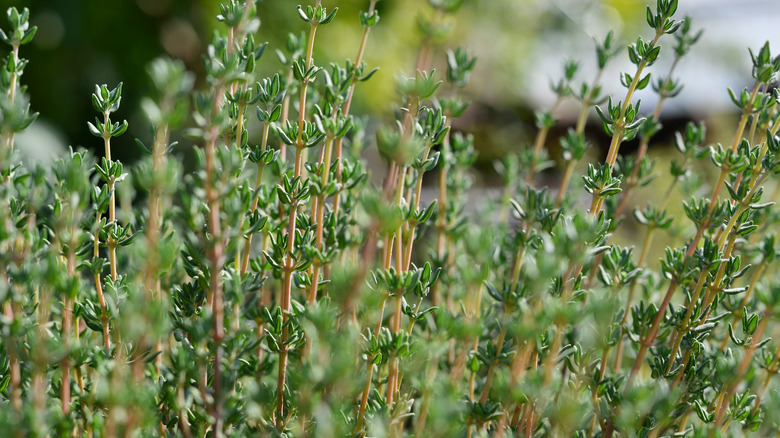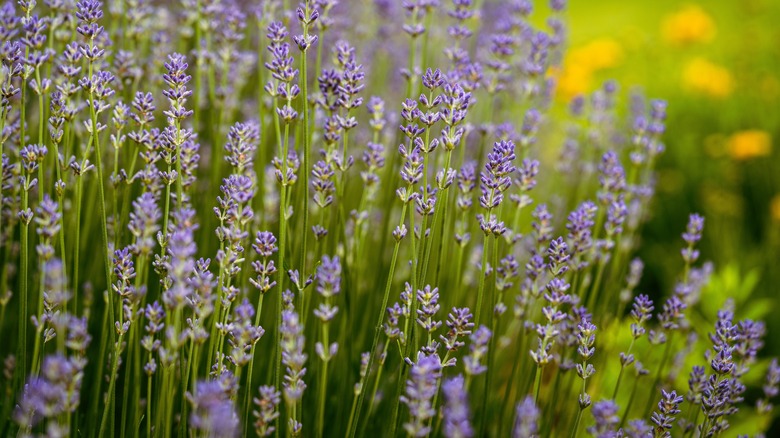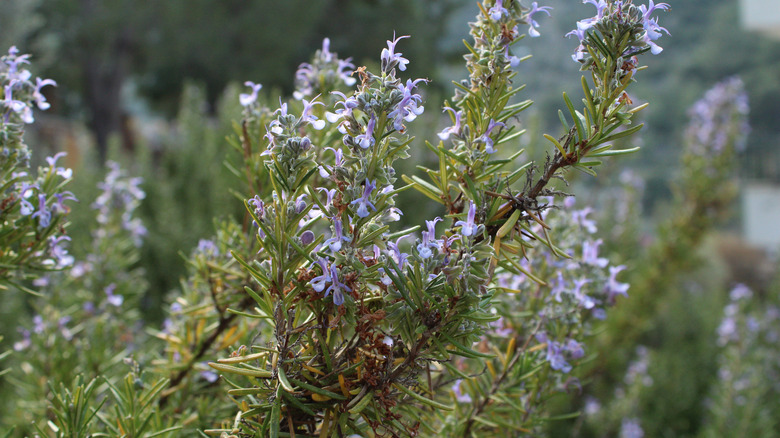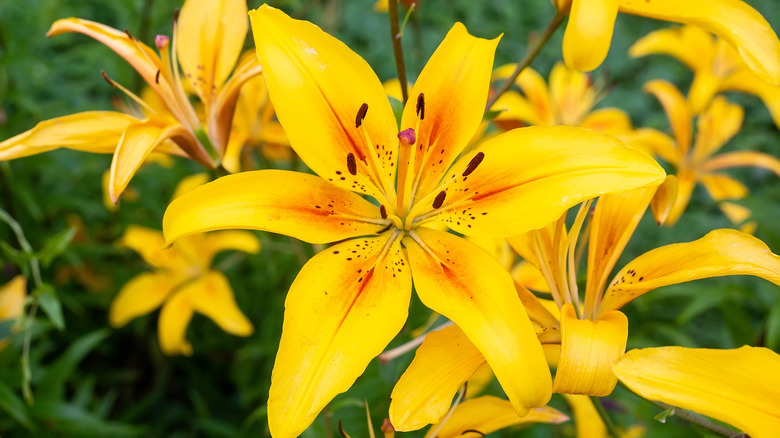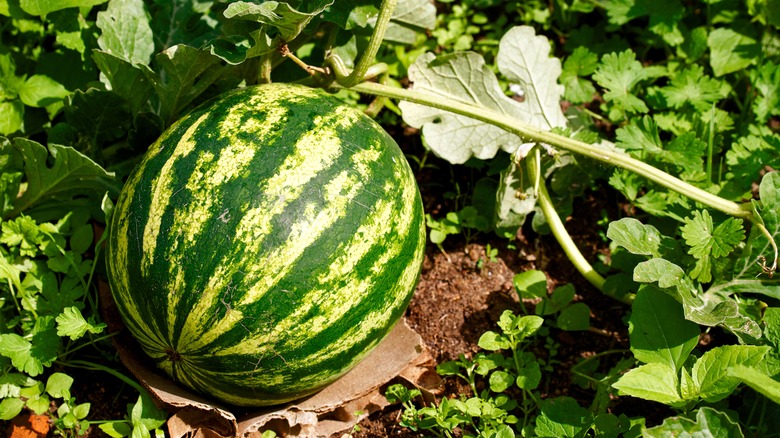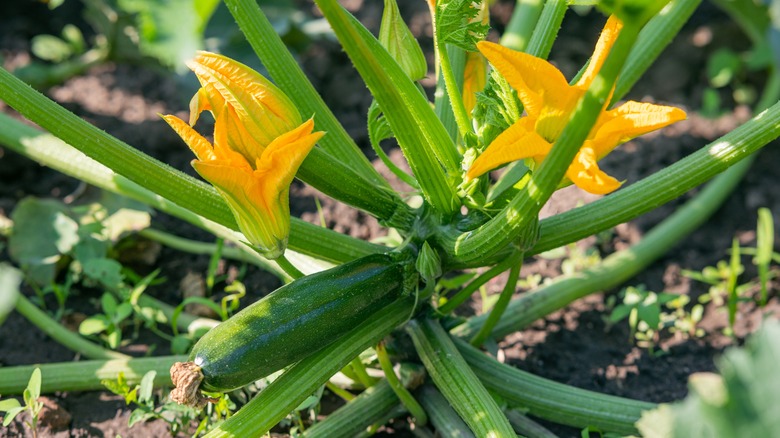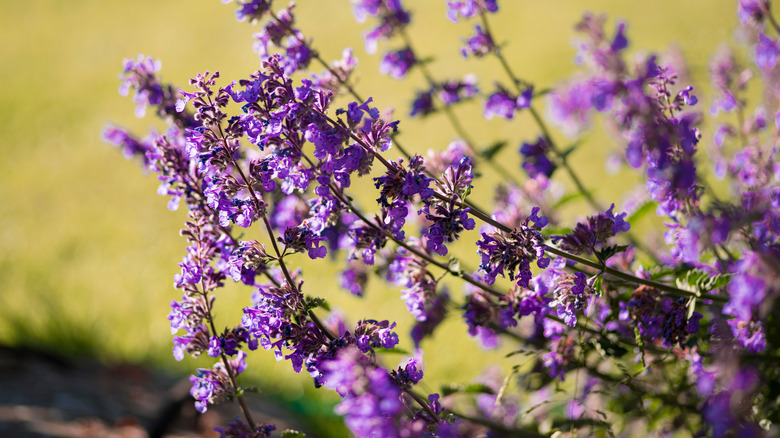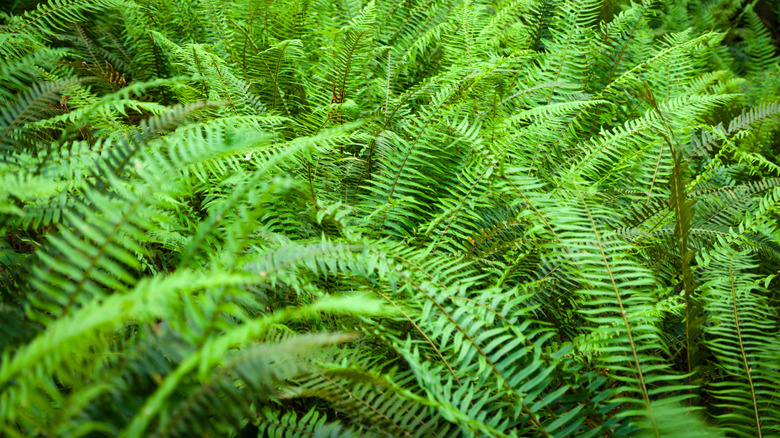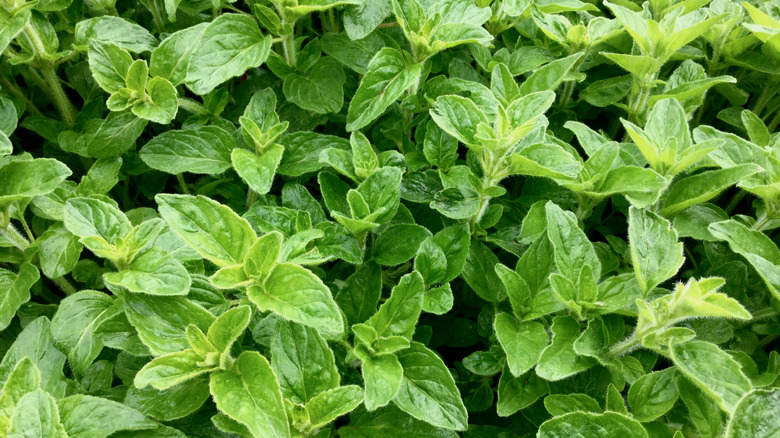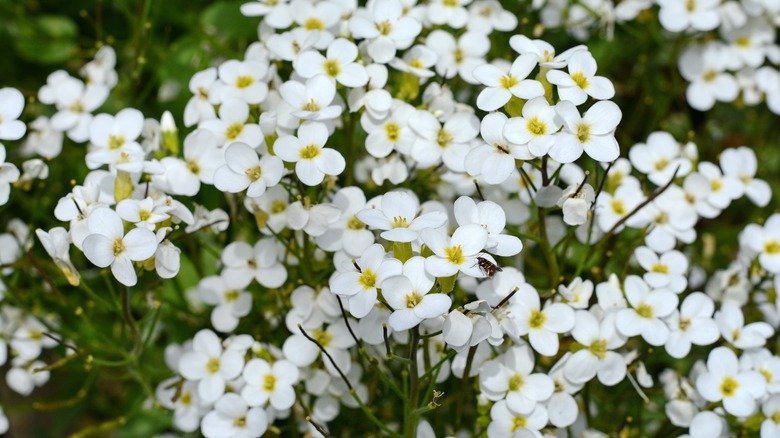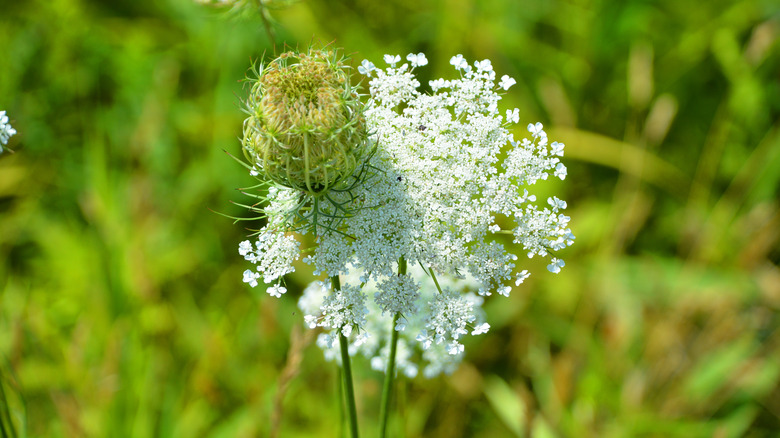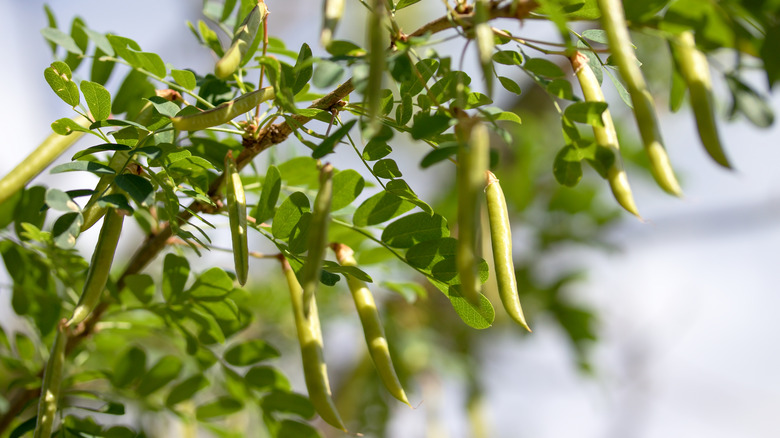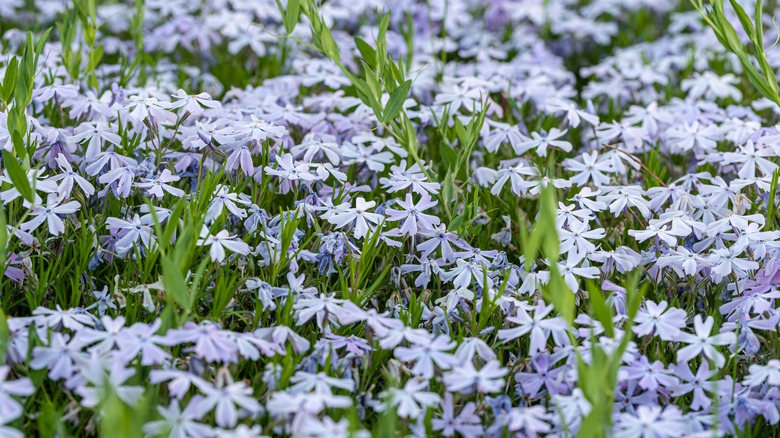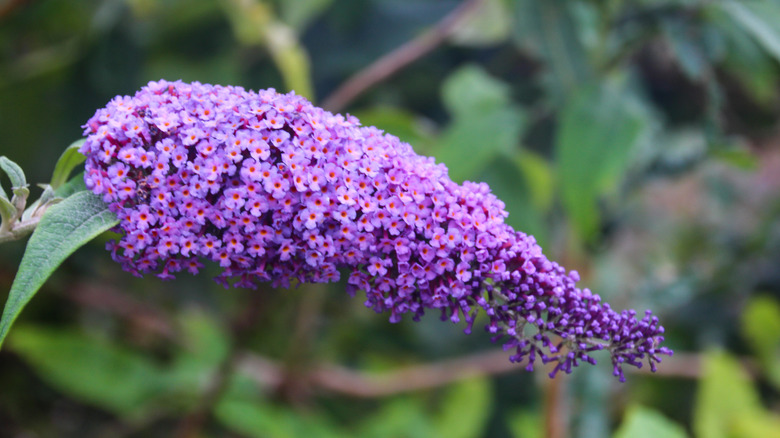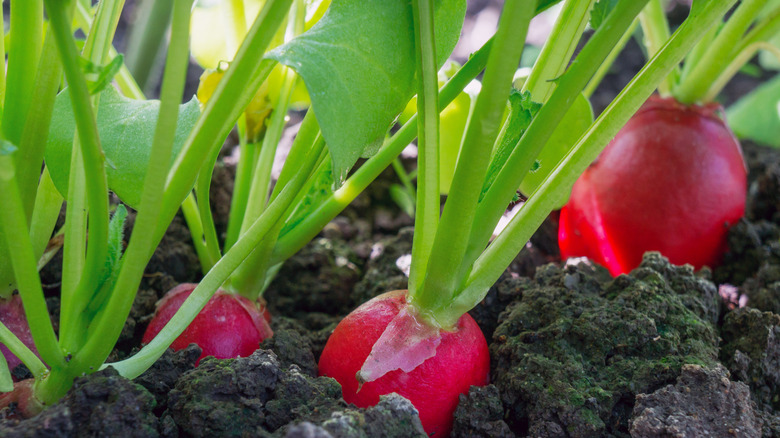15 Plants That Thrive In Sandy Soil
Sandy soil is not necessarily a curse on your garden. In fact, many of your favorite plants can grow just fine in the medium. Nutrient-poor, well-draining, and gritty soil is exactly what Mediterranean plants like lavender, catmint, and rosemary should be planted in. Though plants such as edible herbs, root vegetables, and alliums can grow in a range of mediums, soils that provide little water retention and that are similar to their natural environment will allow them to grow more easily. Still, you don't have to stick to plants that need dry, acidic, and infertile soil as amending your sandy medium is simple too.
Utah State University suggests amending sandy soil with organic matter to make it richer in nutrients and to avoid frequent fertilization. Organic matter is described as composted tree bark, leaves, straw, manure, or green waste. You can make it yourself if you know how, or you can buy pre-made organic material from your local nursery. Whether your sandy soil is rich or poor in nutrient content, it's still possible to grow thriving plant life in your garden. You just have to know what your options are. Our collection of 15 plants perfect for these conditions includes herbs, flowers, vegetables, and more. Take a look for yourself.
1. Thyme
Thyme (Thymus vulgaris), native to southern Europe and northern Africa, can be grown in a range of conditions as long as the soil is dry and rocky or sandy, says North Carolina State Extension. When planted in the right area, the thyme plant can still produce its tasty leaves even in times of drought or frost.
Bloom Season: Spring and summer
USDA Growing Zone: 5 to 9
Growing Conditions: Full sun
Soil Type: Evenly moist and well-draining
Size: 6 to 12 inches tall and wide
2. English lavender
English lavender plants (Lavandula angustifolia) are easy-to-grow herbaceous perennials that belong to the Lamiaceae family, also known as the mint family, according to Missouri Botanical Garden. Not only is this flower grown for its wonderful scent, but also for its bushy growth habit that looks great in border gardens and rock gardens.
Bloom Season: Summer
USDA Growing Zone: 5 to 8
Growing Conditions: Full sun
Soil Type: Low fertility, alkaline, and well-draining
Size: 3 feet tall and 4 feet wide
3. Rosemary
Rosemary (Salvia rosmarinus) is another fragrant herb that can be grown in sandy soil. This low-maintenance plant tolerates a few different growing conditions, and it doesn't mind soil that is acidic, alkaline, loamy, or chalky, as told by RHS. After some years of growth, your rosemary plant can reach up to 8 feet tall in ideal conditions; however, most of these bushes tend to stay about 4 feet tall on average.
Bloom Season: Spring and summer
USDA Growing Zone: 8 to 10
Growing Conditions: Full sun
Soil Type: Poor and well-draining
Size: Up to 8 feet tall and wide
4. Daylily
The daylily flower (Hemerocallis spp.) is a drought-tolerant, frost-resistant, and easy-to-grow perennial that looks great on its own or intermixed with other flowers with similar care requirements. To make a daylily happy, Jersey Yards suggests direct sunlight, well-draining soil, and regular watering. This flower doesn't need much specific care, but providing it with these things will help it grow stronger.
Bloom Season: Summer to fall
USDA Growing Zone: 3 to 10
Growing Conditions: Full sun
Soil Type: Well-draining
Size: 1 to 3 feet tall and 1 to 2 feet wide
5. Watermelon
Watermelon (Citrullus lanatus) comes from an annual vine that is known for its ability to climb over other plants and structures, explains the University of Michigan. This vigorously growing plant features long green stems that can become more than 16 feet long and pinnately lobed leaves, which stem from these branches. Its fruit can be eaten raw as well as its leaves and seeds; however, they have more value when they are cooked.
Bloom Season: Summer
USDA Growing Zone: 2 to 11
Growing Conditions: Full sun
Soil Type: Well-drained sandy loam
Size: 18 inches tall
6. Zucchini
Zucchini (Cucurbita pepo) comes from the same species that also produces patty pans, field pumpkins, squash, acorn squash, and more. This versatile plant looks somewhat similar to the pumpkin plant, however, it can be recognized for its large peltate leaves and the fruit it produces, as per North Carolina State Extension.
Bloom Season: Summer
USDA Growing Zone: 3 to 11
Growing Conditions: Full sun
Soil Type: Well-drained sand or loam with high organic matter
Size: 1 to 2 feet tall and 2 to 3 feet wide
7. Garden catmint
Garden catmint (Nepeta × faassenii) is a clump-forming perennial that shows off fragrant green leaves and purple flowers in the spring, summer, and fall. As described by Missouri Botanical Garden, this sterile hybrid version of catmint is a mix between Nepeta racemosa and Nepeta nepetella. It should be grown in sandy soil that retains little water for the best growth.
Bloom Season: Summer and autumn
USDA Growing Zone: 3 to 8
Growing Conditions: Full sun to partial shade
Soil Type: Well-draining
Size: 4 to 18 inches tall and wide
8. Western sword fern
The western sword fern (Polystichum munitum) is a large plant native to the United States that can grow up to 6 feet tall and wide. A no-fuss plant, according to Monrovia, this fern is known to grow in tropical gardens, poolside gardens, and border gardens that provide different kinds of lighting and soil.
Bloom Season: Does not flower
USDA Growing Zone: 5 to 9
Growing Conditions: Full sun to full shade
Soil Type: Fertile and well-draining
Size: 3 to 6 feet tall and wide
9. Oregano
Oregano (Origanum vulgare) is another common herb you can add to your garden that features sandy soil. Known to be drought-tolerant and suitable for small plots, as pointed out by Washington State University, this plant is perfect for a home garden filled with other tasty herbs that thrive in gritty soil.
Bloom Season: Summer
USDA Growing Zone: 3 to 9
Growing Conditions: Full to partial sun
Soil Type: Well-draining
Size: 2 feet tall and wide
10. Sweet alyssum
Sweet alyssum (Lobularia maritima), which has a mat-forming growth habit, pairs well with other flowers like lobelia, zinnias, and marigolds, as per the University of Wisconsin-Madison. Alternatively, in a sandy lot, you can grow this plant as bedding beneath others that also don't mind the growing medium, such as daylilies. Just be sure to provide sweet alyssum with plenty of water and sun for the best blooms over its growing season.
Bloom Season: Spring to fall
USDA Growing Zone: 5 to 9
Growing Conditions: Full sun to partial shade
Soil Type: Well-draining
Size: 3 to 9 inches tall
11. Queen Anne's lace
Queen Anne's lace (Daucus carota), which is also called the bee's nest plant, birds-nest, devil's plague, and wild carrot, is a member of the carrot family and it spreads aggressively. The plant has naturalized in most American states, and it is even considered invasive in some regions, as described by North Carolina State Extension. Its ability to grow in a range of soils can be a double-edged sword for some gardeners.
Bloom Season: Fall and summer
USDA Growing Zone: 4 to 11
Growing Conditions: Full sun to partial shade
Soil Type: Well-draining
Size: Up to 4 feet tall
12. Siberian pea shrub
The Siberian pea shrub (Caragana arborescens) is a tall-growing, broadleaf evergreen shrub that receives its name from its native region and its pea-like fruit, says Oregon State University. All parts of the fruit are edible, however, they are not very palatable. Most often, the shrub is instead grown for hedging, wildlife cover, or as an ornamental tree.
Bloom Season: Spring
USDA Growing Zone: 2 to 11
Growing Conditions: Full sun to partial shade
Soil Type: Well-draining
Size: Up to 20 feet tall
13. Moss phlox
Moss phlox (Phlox subulata) is described as a carpet of color by Monrovia. This purple, blue, pink, or white blooming plant is an instant mood-lifter in the garden. Not only that, but it also is extremely easy to grow in a few different mediums. Moss phlox can be planted in many garden types as long as the soil is well-draining and somewhat dry.
Bloom Season: Spring and summer
USDA Growing Zone: 3 to 9
Growing Conditions: Full sun
Soil Type: Well-draining loamy sand
Size: 6 inches tall and 3 feet wide
14. Butterfly bush
Butterfly bushes (Buddleia davidii) can be identified by their tall height and small fragrant flowers that give off a sweet scent, notes Oregon State University. These flowers typically attract bees and hummingbirds as well as butterflies. In a pollinator garden with poor and gritty soil, this bush will fit right in as it grows vigorously and supports beneficial insects.
Bloom Season: Summer
USDA Growing Zone: 5 to 11
Growing Conditions: Full sun
Soil Type: Well-draining
Size: 8 to 12 feet tall
15. Radishes
Radishes (Raphanus sativus) come from an annual plant in the broccoli family that produces crops in the spring or fall depending on where it's planted. Missouri Botanical Garden suggests growing your radishes in sandy or loamy soil where they can receive direct sunlight. After harvesting, the entire plant can be eaten raw or cooked, and the roots may be pickled.
Bloom Season: Spring
USDA Growing Zone: 2 to 11
Growing Conditions: Full sun
Soil Type: Sandy or loamy
Size: 2 to 3 feet tall and 1 to 2 feet wide
